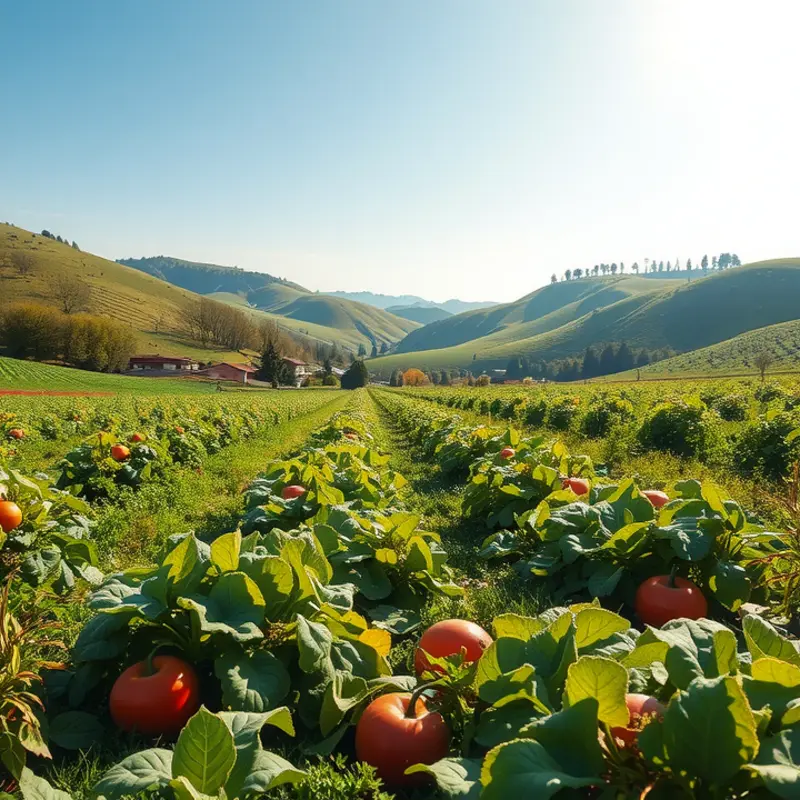Effective food management is vital for maintaining freshness and reducing waste in your kitchen. By mastering safe storage techniques and smart meal planning, you can significantly minimize spoilage and avoid food waste. This guide provides actionable advice to help you optimize your kitchen practices, ensuring your ingredients last longer and remain safe for consumption.
Understanding Food Storage Basics

The art of prolonging the lifespan of your food involves mastering the essentials of food storage. Understanding the specific requirements for different types of food can significantly reduce kitchen waste and spoilage.
To begin with, the optimal storage method often depends on the type of food. Fresh fruits and vegetables, for example, require particular attention to temperature and humidity levels. Most fruits prefer a cool, dry environment. However, tomatoes and bananas are exceptions, thriving best at room temperature to maintain their flavor and texture.
Vegetables vary more widely. Leafy greens demand high humidity and low temperatures, ideally stored in refrigerator crispers. On the other hand, onions, garlic, and potatoes should be kept in a cool, dark, and well-ventilated space to prevent sprouting and spoilage.
Meats and dairy products share a need for cold environments. Raw meat should always be stored on the lowest shelf of your fridge, away from other foods to prevent contamination. Enveloping the meat in tight plastic wrap or foil can prevent odor spread, preserving other food flavors. Dairy products like milk and cheese should likewise be stored at consistent, cold temperatures. Milk thrives in the coldest part of the fridge—not the door—while cheese benefits from breathable wrap to prevent mold.
Eggs deserve special mention: store them in their original carton to ensure freshness and avoid absorbing fridge odors. The carton also buffers eggs from temperature fluctuations when the fridge door is opened.
The choice of storage containers plays a vital role too. Airtight containers are indispensable for keeping dry goods like pasta, rice, and beans fresh. Mason jars and glass containers are excellent as they do not retain odors, unlike plastic, and allow clear visibility of their contents.
Additionally, adjusting the humidity in your fridge’s crisper drawers boosts longevity for specific produce. High-humidity drawers work well for herbs, while low-humidity is better for fruits. This small tweak can make a significant difference in shelf life.
Understanding precise temperature settings optimizes your storage. Most refrigerators need to be set below 40°F (4°C) to keep bacteria at bay; freezers function best at 0°F (-18°C) or lower.
For further insights into storage practices that align with sustainability goals, you might explore methods to reduce kitchen waste, examining approaches like repurposing containers and reducing plastic use.
The path to mastering food longevity revolves around these foundational storage techniques, each contributing to less waste and fresher meals. By understanding the science behind storage, you can extend the life of your ingredients, ensuring they remain safe and full of flavor.
Smart Meal Planning and Waste Reduction

Effective meal planning stands as a cornerstone in the quest to reduce kitchen waste. It begins with thoughtful design of a shopping list, which serves as your guiding blueprint. Start by inventorying your pantry, fridge, and freezer. Identify what ingredients you already have and which ones are close to expiring. This reduces the likelihood of unnecessary purchases and ensures current supplies don’t go unused. To avoid impulse buys, stick strictly to your list.
Pay close attention to portion control, which plays a pivotal role in minimizing waste. Cooking excessive amounts often leads to leftovers that end up uneaten and discarded. Consider the number of people you are serving and adjust recipes accordingly. When in doubt, cook smaller portions; it’s easier to prepare more if needed than to manage an overflowing pot of stew.
Despite our best efforts, leftovers are inevitable. Transforming these remains into exciting, new meals is both a sustainable and creative endeavor. Last night’s roast can metamorphose into today’s wraps or stir-fry. If your vegetables are looking a bit tired, soups, casseroles, or frittatas provide great opportunities for redemption. Minimal prep dinner ideas can offer inspiration for easy reuse without the fuss.
Streamlining your cooking routine also helps in keeping waste at bay. Batch cooking similar ingredients for multiple recipes saves not just time, but also resources. Chop onions, peel carrots, or boil grains in one go and store them in the fridge to use throughout the week. This approach reduces redundant tasks and ensures fresh produce is used before it has the chance to spoil.
Meal planning isn’t just about avoiding waste; it’s also about maintaining nutritional balance. By planning meals that incorporate a variety of food groups, you’re more likely to meet your nutritional needs. Use a planner or digital app to map out weekly meals, balancing proteins, vegetables, and grains, thereby avoiding the trap of monotonous dinner repertoires.
Ultimately, smart meal planning involves a cycle of preparation, consumption, and revision. Regularly assess what you’ve cooked, eaten, and wasted to refine your list and planning methods. This continuous improvement loop ensures not only a reduction in waste but also a kitchen that nurtures both well-being and the environment.
Final words
Reducing kitchen spoilage not only helps preserve the freshness of your food but also plays a crucial role in minimizing waste. By implementing proper food storage techniques and creating a thoughtful meal plan, you can enjoy your ingredients for longer and contribute to a more sustainable kitchen. Remember to stay informed about the best practices for different types of food and adjust your habits accordingly. With a little effort, you can transform your daily cooking experience while aiding the environment.







